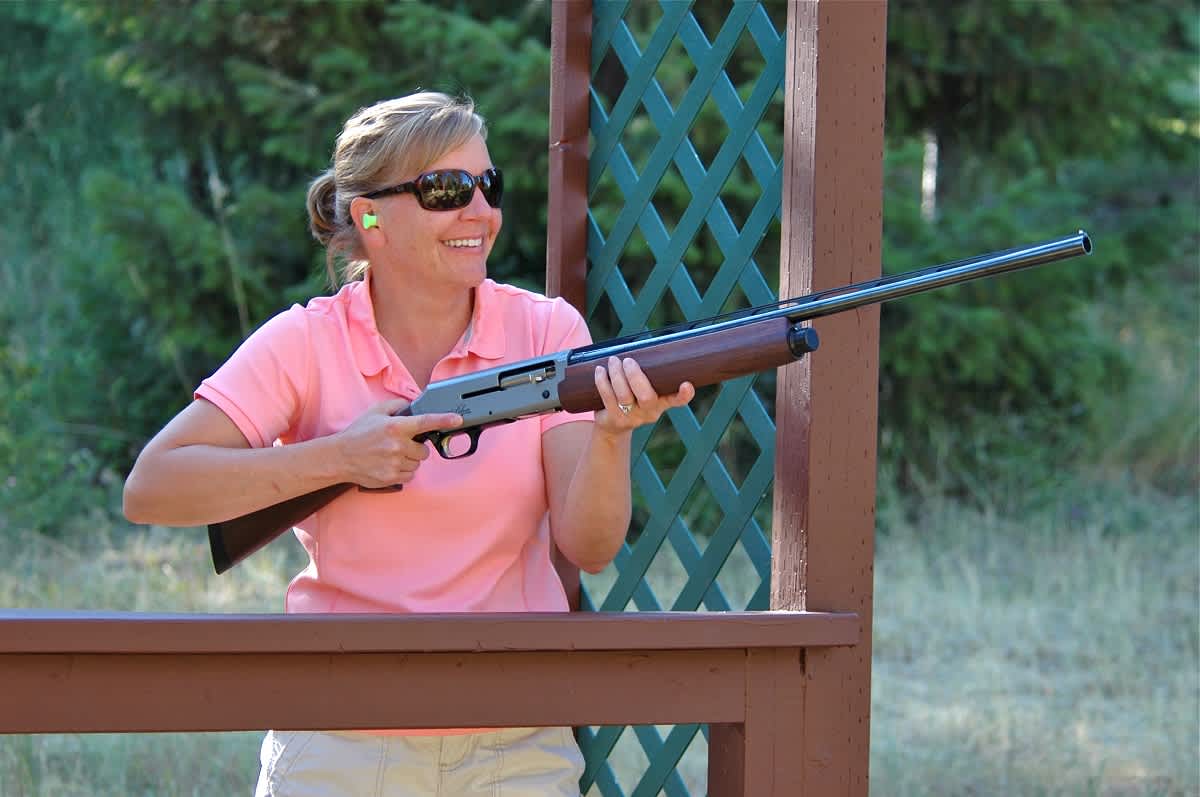Why a New Shooter’s First Shotgun Should Be a Semiauto
Bill Miller 08.11.14

My first shotgun was a single-shot hammer gun, a hand-me-down from my mother. Dad bought it for her while they were dating, and though they hunted together a few times, Mom never caught the fever. She loved the dogs. She loved walking in the autumn fields, but shooting stuff—not so much. A couple outings quenched her curiosity of what her fiancée found “fun” in all this, and she never touched the gun again.
Today, I work part-time at a small sporting goods store, mostly to get out of the house and to maintain measure on the pulse of what real hunters and shooters are buying.
Usually, a parent seeking a first shotgun for a son or daughter makes a beeline to the single-shots. Ones with longer-term vision glance at the pumps. I generally eavesdrop on the conversation for a minute then ask if I can help. You should see the looks I get when I suggest a semiautomatic shotgun.
Let’s set the record straight on what a semiautomatic shotgun is and is not. While they are often called “automatics” or “autos,” that terminology is incorrect and creates bad PR for the shooting sports. An “automatic” firearm is what’s often called a machine gun. With an automatic you pull the trigger and the gun keeps firing shot after shot until you release the trigger. Semiautomatics are those in which the gun’s mechanical system fires one shot, ejects the empty, and feeds a fresh cartridge into the chamber for each pull of the trigger (semiautos can perhaps more simply and accurately be referred to as “autoloaders”). Semiautomatic firearms are the most popular in the world for hunting, competition, and recreational shooting.
 Prejudice against a semiauto shotgun as a first gun is based on misconception about price, complexity, and safety.
Prejudice against a semiauto shotgun as a first gun is based on misconception about price, complexity, and safety.
Price
Semiautomatic shotguns are available in a wide range of prices. A new in the box, basic, reliable semiauto with a synthetic stock and accessories can be purchased for as little as $500. A high-quality semiauto equipped with everything a starting shooter needs to grow and develop for years to come—in trap, hunting, and other clay target sports—can be acquired for as little as $700 to $800. Semiautos in this price range offer the most gun for the money of any you will find! Quality used semiauto shotguns will generally be found at $375 and up.
While these prices are a bit higher than single-shots and most pumps, they represent lasting value. Chances are the new shooter will keep, use, enjoy, and experience satisfaction with the semiauto longer than they will the others. If it’s properly maintained, the semiauto will hold higher resale value, too.
Complexity
I contend the semiauto may be the easiest shotgun to learn to use and shoot well, especially in a clay-shooting environment where most shooters develop. Firing a semiauto doesn’t take a lot of thought or movement. This offers the advantage of allowing the learning shotgunner to concentrate on all the other important aspects of making the shot: safety, visualization, routine, trigger pull, follow through, and so on. The world’s greatest shooters in all shotgun disciplines shoot either break-action or semiautomatic guns for this reason. They can concentrate fully on breaking the target with no extraneous “moving parts” to the process, like pumping the action.
Another advantage of the semiautomatic is the action locks open after the last shell in the gun is fired—even when it is loaded as a single-shot. This “automatically” makes the gun safe and unshootable until another shell is loaded and the action is intentionally closed. There is nothing for the beginning shooter to forget on the firing line. The process is the simplest: load, push button to close action, shoulder gun, fire (action stays open), lower gun, wait for next turn to shoot.
Safety
Some parents and coaches look on the simplicity of “pull-shoot-pull-shoot-pull-shoot” until the gun is empty as a safety negative. However, since only one shell at a time should be loaded into the gun in those initial shooting/teaching sessions, this should not be an issue. Many clay target games (like trap) only allow one shot per target, anyway.
If there is a concern about loading more shells into the magazine at the range or in the field, this can easily be eliminated by dropping a full-length plug into the semiauto’s magazine tube, rendering it a true single-shot.
Having watched beginning shooters struggle to pull back the hammer on a single-shot, I contend that the simple push-button or slide safety on a semiauto is safer. It’s easy to operate with the gun pointed in a safe direction, rather than the muzzle flailing everywhere as a young shooter strains to cock the hammer.
Big bonus
Depending on the make and model, the semiautomatic action employs either an inertia system or a gas system. In either case, it uses energy from firing a shell to eject the spent shell and replace it with a loaded shell from the magazine. This use of energy creates the advantage of reducing recoil transmitted to the butt of the gun.
Gas-operated semiautos reduce felt recoil the most of any action. This characteristic is a huge advantage for the semiauto. Becoming a great shotgunner requires lots and lots of practice. That means firing thousands, potentially millions, of rounds in a lifetime. Pro shooters recognize the importance of minimizing recoil, and they know the semiauto is the action that does it best.
For the new shooter combining a quality semiautomatic with light-recoiling target loads will make initial experiences more enjoyable, and keep them looking forward to the next time he or she gets to go shooting. Pick a light payload, reduced velocity load like Federal’s Gold Medal Extra Lite 1-1/8-ounce at 1,100 fps, Gold Medal 1-ounce at 1,180 fps, or the Top Gun Target 1-1/8-ounce at 1,145 fps.
I have to wonder. If Dad had introduced Mom to shooting with a semiauto, might she still be a shooter today? We’ll never know.
 Tip of the Week
Tip of the Week
Dove opener is just a couple of weeks away. Are you ready? Water-hole hunting doves can be a buggy adventure. While you’re stocking up on shells for opener, make sure you also have plenty of butane cartridges and repellent pads for your ThermaCELL. Then you can wait for the flight in mosquito-free comfort!




